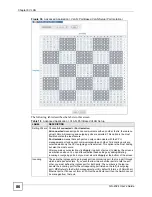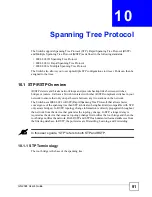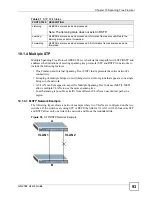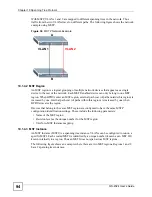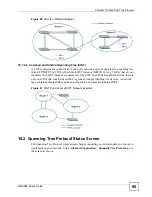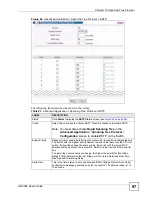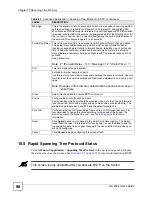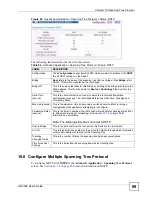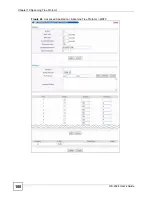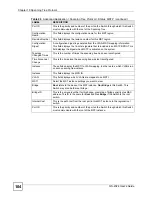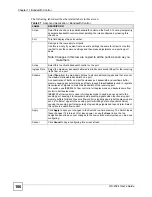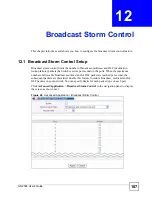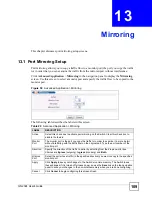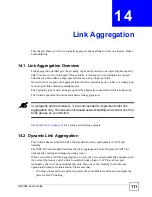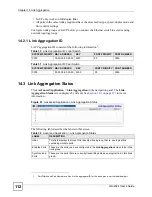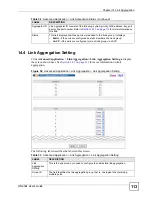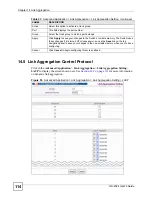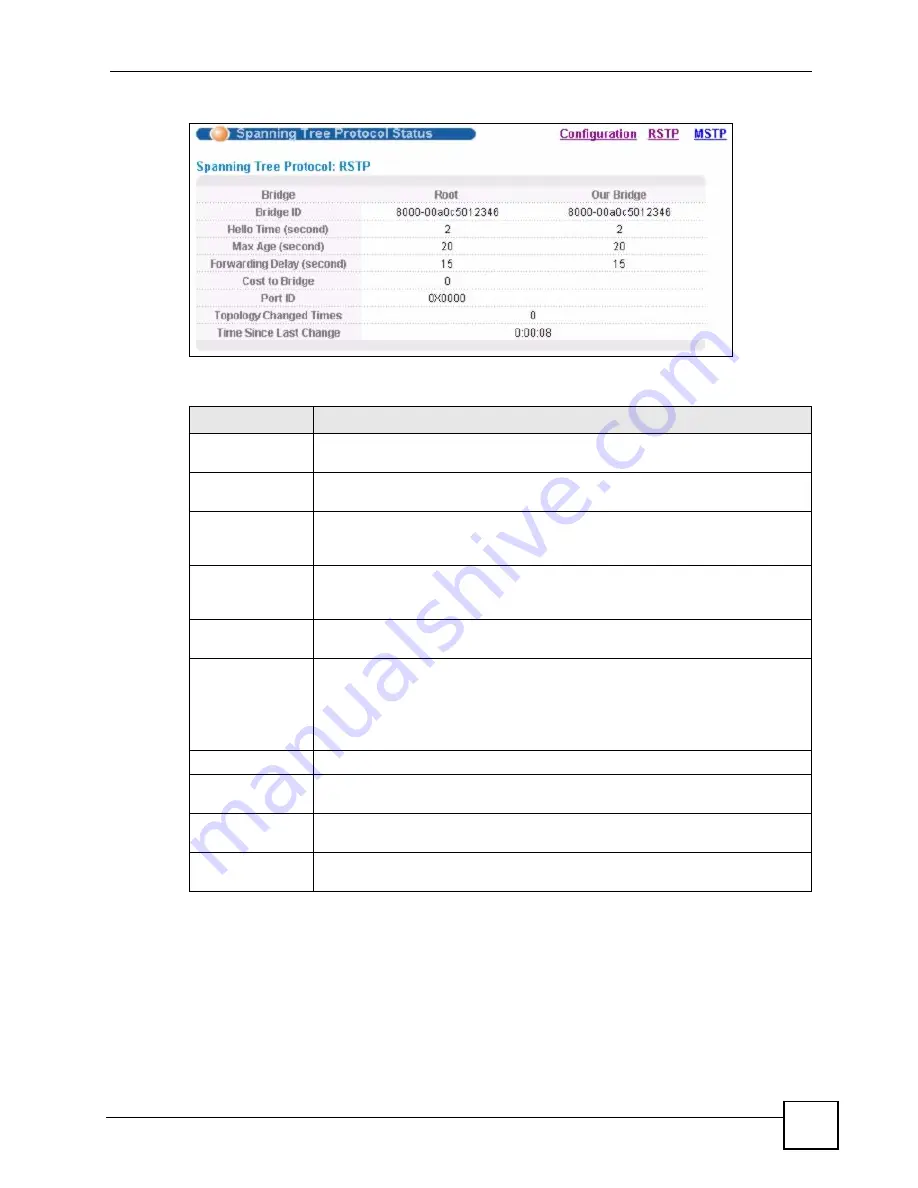
Chapter 10 Spanning Tree Protocol
GS-2024 User’s Guide
99
Figure 45
Advanced Application > Spanning Tree Protocol > Status: RSTP
The following table describes the labels in this screen.
10.6 Configure Multiple Spanning Tree Protocol
To configure MSTP, click
MSTP
in the
Advanced Application
>
Spanning Tree Protocol
screen. See
for more information on MSTP.
Table 24
Advanced Application > Spanning Tree Protocol > Status: RSTP
LABEL
DESCRIPTION
Configuration
Click
Configuration
to specify which STP mode you want to activate. Click
RSTP
to edit RSTP settings on the Switch.
Bridge
Root
refers to the base of the spanning tree (the root bridge).
Our Bridge
is this
Switch. This Switch may also be the root bridge.
Bridge ID
This is the unique identifier for this bridge, consisting of the bridge priority plus the
MAC address. This ID is the same for
Root
and
Our Bridge
if the Switch is the
root switch.
Hello Time
(second)
This is the time interval (in seconds) at which the root switch transmits a
configuration message. The root bridge determines Hello Time, Max Age and
Forwarding Delay.
Max Age (second) This is the maximum time (in seconds) a switch can wait without receiving a
configuration message before attempting to reconfigure.
Forwarding Delay
(second)
This is the time (in seconds) the root switch will wait before changing states (that
is, listening to learning to forwarding). See
information on port states.
Note: The listening state does not exist in RSTP.
Cost to Bridge
This is the path cost from the root port on this Switch to the root switch.
Port ID
This is the priority and number of the port on the Switch through which this Switch
must communicate with the root of the Spanning Tree.
Topology
Changed Times
This is the number of times the spanning tree has been reconfigured.
Time Since Last
Change
This is the time since the spanning tree was last reconfigured.
Summary of Contents for Dimension GS-2024
Page 2: ......
Page 7: ...Safety Warnings GS 2024 User s Guide 7 This product is recyclable Dispose of it properly ...
Page 8: ...Safety Warnings GS 2024 User s Guide 8 ...
Page 26: ...List of Tables GS 2024 User s Guide 26 ...
Page 28: ...28 ...
Page 36: ...Chapter 2 Hardware Installation and Connection GS 2024 User s Guide 36 ...
Page 44: ...44 ...
Page 62: ...Chapter 6 System Status and Port Statistics GS 2024 User s Guide 62 ...
Page 70: ...Chapter 7 Basic Setting GS 2024 User s Guide 70 Figure 27 Basic Setting IP Setup ...
Page 74: ...Chapter 7 Basic Setting GS 2024 User s Guide 74 ...
Page 76: ...76 ...
Page 88: ...Chapter 8 VLAN GS 2024 User s Guide 88 ...
Page 110: ...Chapter 13 Mirroring GS 2024 User s Guide 110 ...
Page 120: ...Chapter 15 Port Authentication GS 2024 User s Guide 120 ...
Page 138: ...Chapter 18 Multicast GS 2024 User s Guide 138 ...
Page 152: ...Chapter 19 Authentication Accounting GS 2024 User s Guide 152 ...
Page 157: ...157 PART IV IP Application Static Route 159 Differentiated Services 163 DHCP 167 ...
Page 158: ...158 ...
Page 162: ...Chapter 21 Static Route GS 2024 User s Guide 162 ...
Page 166: ...Chapter 22 Differentiated Services GS 2024 User s Guide 166 ...
Page 174: ...174 ...
Page 198: ...Chapter 25 Access Control GS 2024 User s Guide 198 ...
Page 200: ...Chapter 26 Diagnostic GS 2024 User s Guide 200 ...
Page 204: ...Chapter 27 Syslog GS 2024 User s Guide 204 ...
Page 218: ...218 ...
Page 222: ...Chapter 32 Troubleshooting GS 2024 User s Guide 222 ...
Page 230: ...Chapter 33 Product Specifications GS 2024 User s Guide 230 ...
Page 232: ...232 ...
Page 240: ...Appendix A Pop up Windows JavaScripts and Java Permissions GS 2024 User s Guide 240 ...
Page 252: ...Appendix C Legal Information GS 2024 User s Guide 252 ...
Page 258: ...Appendix D Customer Support GS 2024 User s Guide 258 ...
Page 266: ...Index GS 2024 User s Guide 266 ...


